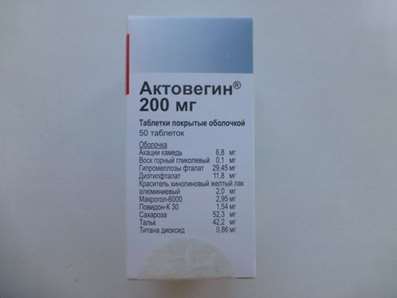Autism - Causes and symptoms
15 Dec 2016
How is autism in childhood, why the patient is difficult to adapt to life in society and what are the causes of autism.
Autism is defined by specific behavioral symptoms: difficulties in social communication (atypical eye contact and social interaction, poor conversational skills and peer relationships) and repetitive behaviors, restricted interests and touch sensitivity. Although autism is described in terms of behavior, it has a biological basis: abnormalities in the brain associated with behavioral manifestations of disease.
The history of autism research
In 1943 Leo Kanner published his first article in the US, which describes a group of 11 children from his medical practice, who had in common: social isolation, lack of interest to others, and other features. He claimed that these children do not suffer from schizophrenia or mental retardation, but suffered from a new, previously not identify the syndrome.
At the same time, Hans Asperger in Austria found a similar set of behavioral symptoms in clinical practice. He published an article in 1944, but it drew the attention of only a few decades later. In the 1980s the work of Asperger asked Lorna Wing, Christopher Gillberg and other researchers.
During the first 20 years after the discovery of autism clinical studies have been conducted in which the described phenotypes. In 1970-1980-ies the researchers looked for cognitive explanations of the key symptoms of autism. This continued until the 1990s, when the study of genetic causes of autism. They were twin studies and research on psychogenetics. Also, scientists began to study the psychological treatment of autism.
In connection with the development of genomic analysis and imaging in the late twentieth century technology, scientists have paid attention to the biological basis of autism and found specific genes, common gene variations associated with autism. During the last decade, new data related to non-genetic causes of autism, as well as new treatments. Now the focus is on things that are not explored before: the study of autism in girls, the study of individuals with a weak opportunity to learn the language, autism changes associated with maturation and aging. Also, scientists are trying to transfer the knowledge gained in the laboratory, in a society that will be able to better support children and adults with autism and their families.
Symptoms of autism
Symptoms of autism are divided into two large groups. The first group includes the symptoms associated with a constant shortage of social communication in multiple contexts. First, the deficit in children social and emotional interaction, which manifests itself in the fact that they can not participate in a mutual conversation, to share other people's interests and emotions, can not initiate contact with others and respond to them. Secondly, they have a shortage of nonverbal communicative behavior, which is demonstrated in social interaction: they are poorly integrated into the verbal and non-verbal communication, can not hold eye contact, do not own body language, do not understand the sign value, but sometimes they completely absent facial mimicry and non-verbal communication. Third, patients with a deficit in understanding and maintaining relationships with people they can not change the behavior depending on the social context, have difficulty with the game of the imagination, can not make friends, they have no interest in peers.
The second group of symptoms - is limited and repetitive modes of behavior, interests and activities. Firstly, patients exhibit stereotyped repetitive motor movements, the use of objects and speech. For example, they follow the simple motor actions, build toys in a row, automatically repeating the same words. Secondly, they can adapt only to identical, recurring events, can not be flexible to changes in the usual rituals and modes of verbal and nonverbal behavior under stress due to the slightest change can not shake hands with people, walking the same road and eat one the same food every day. Third, patients with very limited fixed interests - often in unusual things. Fourth, they happen to touch interest unusual environmental aspects. For example, they are indifferent to pain or temperature, do not respond well to specific sounds and textures, especially strong sense of smell, like to touch things, they like light.
Concomitant pathology
Related characteristics of people with autism range from cognitive (mental retardation, speech disorders) to psychological (difficult behavior), health care (drowsiness, epilepsy) and psychopathology. Most children and adults with autism have one or more than one comorbidities. These pathologies are often more devastating than autism symptoms, and should be considered in treatment.
Neural and cognitive characteristics
Attempts to understand the neural disorders associated with autism are complex and multiple. No single part of the brain damage. On the contrary, autism is a disease that is considered at the system level. It is widely believed that autism can be described as disease-related, ie structural and functional problems involving different areas of the brain to process the information to communicate with each other. As long as there is not enough research on neuroimaging in which scientists have tried to figure out the difference between autistic brains.
Regarding the cognitive features are three cognitive theory of autism. They are not mutually exclusive, and possibly all of them are correct. The first theory - the theory of mind. She says that people with autism can not interpret the mind of other people can not understand their thoughts and feelings. Another theory - the theory of weak central coherence, which states that people with autism focus more on details than on the context. A third theory - the theory of executive function disorders, according to which people with autism are not able to plan, organize themselves and move from one activity to another.
Manifestations of Autism disease
There are many differences in how autism manifests itself, but more often it occurs in boys. In four boys with autism there is one girl. There are also changes in the development and manifestation of the disease. Autism appears in the second year. At the beginning of the disease in a child decreases social inclusion, there are problems with eye contact and speech development.
In some children, it develops during preschool years, most of them are catching up with their peers, although they are still problems with the use of speech in a social context. Repetitive behaviors, sensory sensitivity and limited interests increase during preschool age. Most children display symptoms of the peak occurs in 4-5 years. During the early school period, the symptoms are stabilized, and in adulthood observed a slight decline core symptoms of autism. However, during this period can increase the risk of depression, but it is treated with medication and psychotherapy.
Causes of autism
Autism is a complex disorder of the nervous system, which has no single cause. We prefer to talk about the factors that increase the risk. It is a genetic disease that can be hereditary and non-hereditary. In addition, non-genetic factors have autism, which interact with genetic. It is important that there is a match between genetic and non-genetic factors in autism and other disorders of the nervous system, such as speech disorders, schizophrenia and attention deficit hyperactivity disorder.
There are genes that are associated with autism. One example - CNTNAP2 gene associated with autism and speech disorders. It is also a risk factor for autism and schizophrenia is a mother's infection during pregnancy and birth in the later age. In addition, monozygotic twins are more prone to autism than dizygotic. Children of the same parents are also at greater risk. In general, the risk of autism in the population varies from 1/60 to 1/100. At the same time younger siblings of autistic children have a predisposition 1/10 or 1/20. This fact indicates that the risk of a genetic disease that is associated with the risk of multiple alleles of genes. It can be both hereditary and non-hereditary as genomic changes include mutations in certain genes or DNA segments.
Non-genetic factors that increase the risk of autism was found in epidemiological studies. These studies included the risk of late-life parents, prenatal exposure to certain drugs (eg, thalidomide), an infection or a high level of environmental pollution, postnatal infections such as encephalitis. The mechanism of the disease is still unknown - these factors are discovered not so long ago.
Autism and language
People with autism have problems with participation in conversations. They can not concentrate on one topic can not explain their thoughts interlocutors to use social tools of communication (greetings, gossip and so on) do not understand the jokes and sarcasm can not tell stories.
Autistic speech can be very formal. They can talk monologues, use of rare words and formal linguistic constructs that are not typical for conventional dialogue. Their stories may be facts and events, but do not have enough details about the motives and feelings of people. Many people with autism can not speak fluently. They are about 25-30%. Some of them acquire language, but remain behind their peers, have problems with grammar, working memory and the spoken language. These people have autism arises with language disorders. Other patients are almost proficient spoken language - about ¼ of all patients.
Modern methods of treatment of autism
The best treatment that is available now, - psychological, such as behavior analysis. This means that the complex task can be simple steps, and each of them is overcome by using the promotion and motivation of the child. These treatments are most effective when carried out together with the study of development. Early intensive intervention may greatly reduce symptoms and improve cognitive and language abilities. For older children who speak fluently, effective programs for social skills training. One example - the use of social stories to help your child learn the skills that are needed for different sets of situations. For example, you can teach your child to behave on the first day of school: say hello to the teacher, presented to other children, and so on.
Pharmacological treatment is used to treat related conditions (psychological problems, attention deficit hyperactivity disorder, anxiety, drowsiness, and epilepsy), but there are no drugs that are aimed at treating the symptoms. You can buy Cogitum, Paxil, Cortexin.
Future treatments of autism
The future of autism treatment is similar to the methods which have recently appeared in other areas of medicine. This personalized approach that focuses on specific biological background and psychological symptoms. So how much is known about the biology of autism (genes and their expression), it is expected that they will develop new medicines that will help people with genetic mutations. A more targeted psychological treatments are also on the horizon, especially those that can be accessed by the public. In the end, we can use a combination of personalized medical and psychological treatment, which, if timely use will alleviate symptoms and improve the ability of autistic children to adapt to society.

 Cart
Cart





